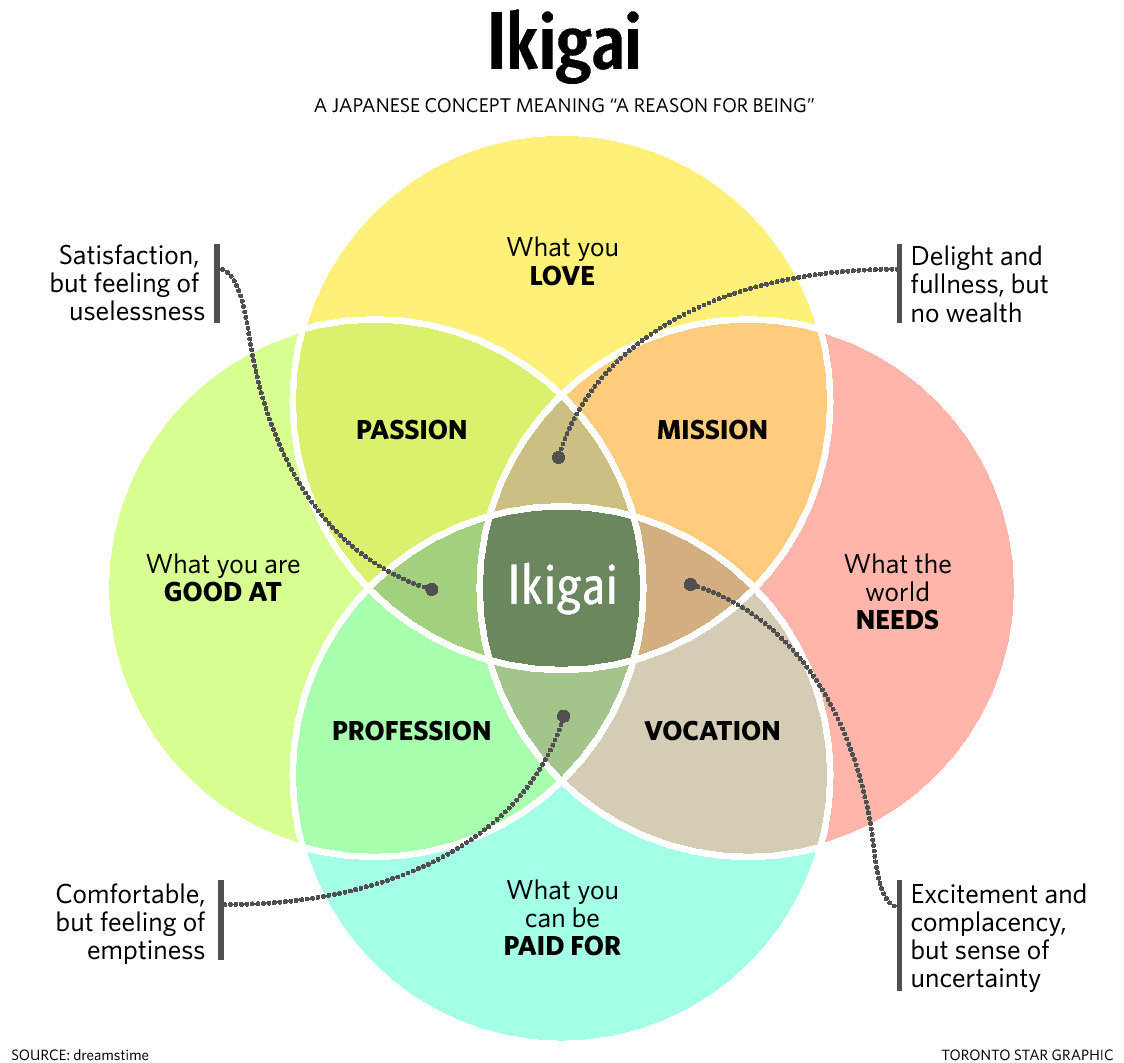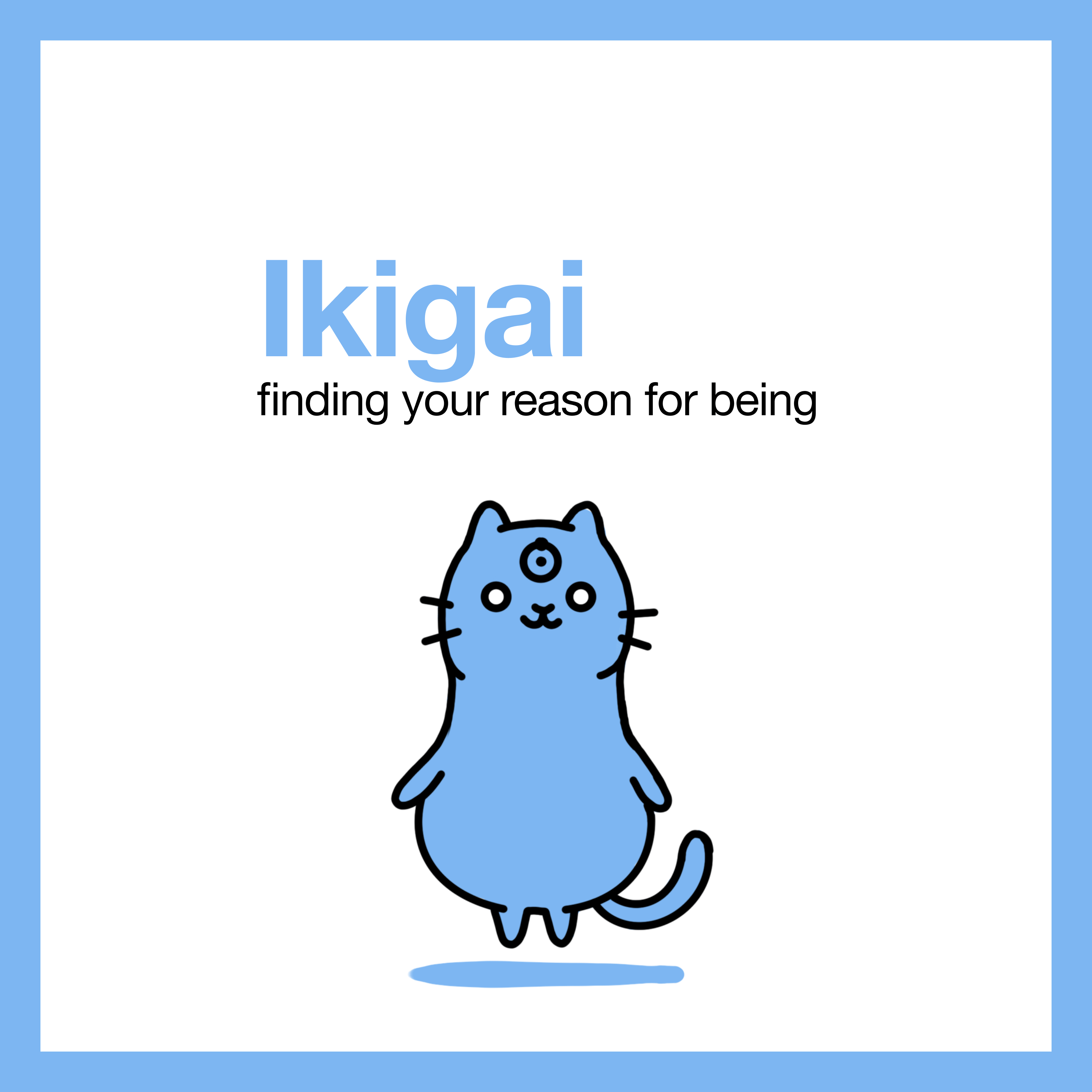The concept of work-life balance is pervasive in the modern workforce, it inevitably comes up in the interview process and is often a theme when examining employee retention. It's an important and necessary consideration but one that needlessly creates a false dichotomy, as if one's career is somehow diametrically opposed to their personal life. Allow us to introduce the Japanese concept of ikigai.
The word ikigai (生き甲斐) comes directly from the Japanese words 'iki' ("to live") and 'gai' ("reason"), translating loosely to 'a reason for being.' At a high level, ikigai is a model to help you find a sense of purpose, direction, and fulfillment in life. It is often depicted as a venn diagram which imagines ikigai as the intersection of four areas that make for a fulfilling and purpose-driven life:
What you love
What you are good at
What the world needs
What you can get paid for

The concept of ikigai has long been observed in Japanese culture, dating all the way back to the Heian period (794 to 1185), but was first popularized in Japan by psychiatrist and academic Mieko Kamiya in her 1966 book "On the Meaning of Life." More recently, the idea has been popularized and examined in the West with a well-known TEDxTalk by Dan Buettner, and the book 'Ikigai: The Japanese Secret to a Long and Happy Life,' by Héctor García and Francesc Miralles.
Ikigai is more than just finding a dream job though, it's often described as the feeling of accomplishment from pursuing one's passions. Activities that allow one to feel ikigai are never forced upon them, they are undertaken willingly and thus, each person's own ikigai is deeply personal to them. Ikigai encompasses both the object or source that brings value and meaning to one's life and the object or source that stands as proof of value and meaning in a fulfilling life. It's a nuanced but important distinction.
Dan Buettner, a National Geographic Fellow and Explorer, came across the idea as he was studying centenarian communities (blue zones) across the globe. His research took him to Okinawa, Japan, once fittingly known as the land of immortals, which enjoys the longest life-expectancy in the world. Okinawan centenarians age slower and experience the three leading killers in the West - coronary heart disease, stroke, and cancer-at the lowest frequencies in the world. Nearly two thirds of their centenarian population is still functioning independently at age 97.
Most Okinawans will credit their longevity to two things: ikigai and moai. Ikigai is their reason to wake up and be active and lead a fulfilling life. Elders in the community are able to clearly articulate exactly what their ikigai is.
Moai is an informal social group that share common interests and act as a support network. Many of these informal networks are formed in childhood and continue on well into their senior years providing social, emotional, and sometimes, financial support.
So, what can we learn from the Okinawans?
Stay active
In Okinawa, there is no concept of retirement. In fact, there isn't even a word for it! Because they are pursuing their passions and enjoying it, they will continue to work or stay active as long as they are healthy enough to. Staying active in old age can help deter mobility and cognitive decline.
Surround yourself with good friends
Forming long-lasting and meaningful friendships seems to be a powerful predictor for longevity. In every blue zone across the world, social connectedness is deeply ingrained in the culture. On average, Americans only have three lifelong friends.
Eat Well
There's a Confucian teaching, hara hachi bu, that is practiced among Okinawans. It instructs you to eat until you are 80% full, rather than eating until you are completely full. Okinawans typically eat smaller portion sizes with a wider variety of food and food groups (7 different fruits and vegetables and 18 different foods a day). Their diet features a lot of tofu and considerably less meat, however, this is starting to change with younger generations.
Embrace Ikigai
The Japanese perception of work as an important pillar of life stands in stark contrast with the Western view of work as a decades-long obstacle to retirement. We don't always have the luxury of working a dream job, but inching closer to any areas of intersection in the ikigai model can help us to lead a more fulfilling life.
Each of these lessons can be powerful on their own and in tandem they show a more holistic view of work in relation to one's personal life. All too often we view work in opposition of a fulfilling life when in actuality, it can be an important prerequisite.
